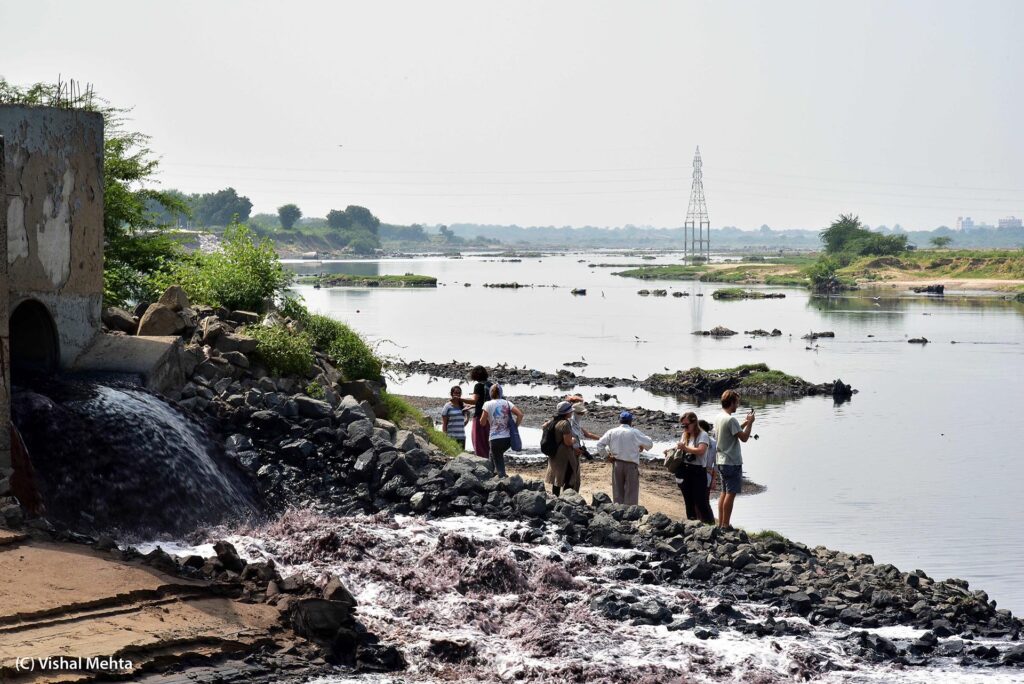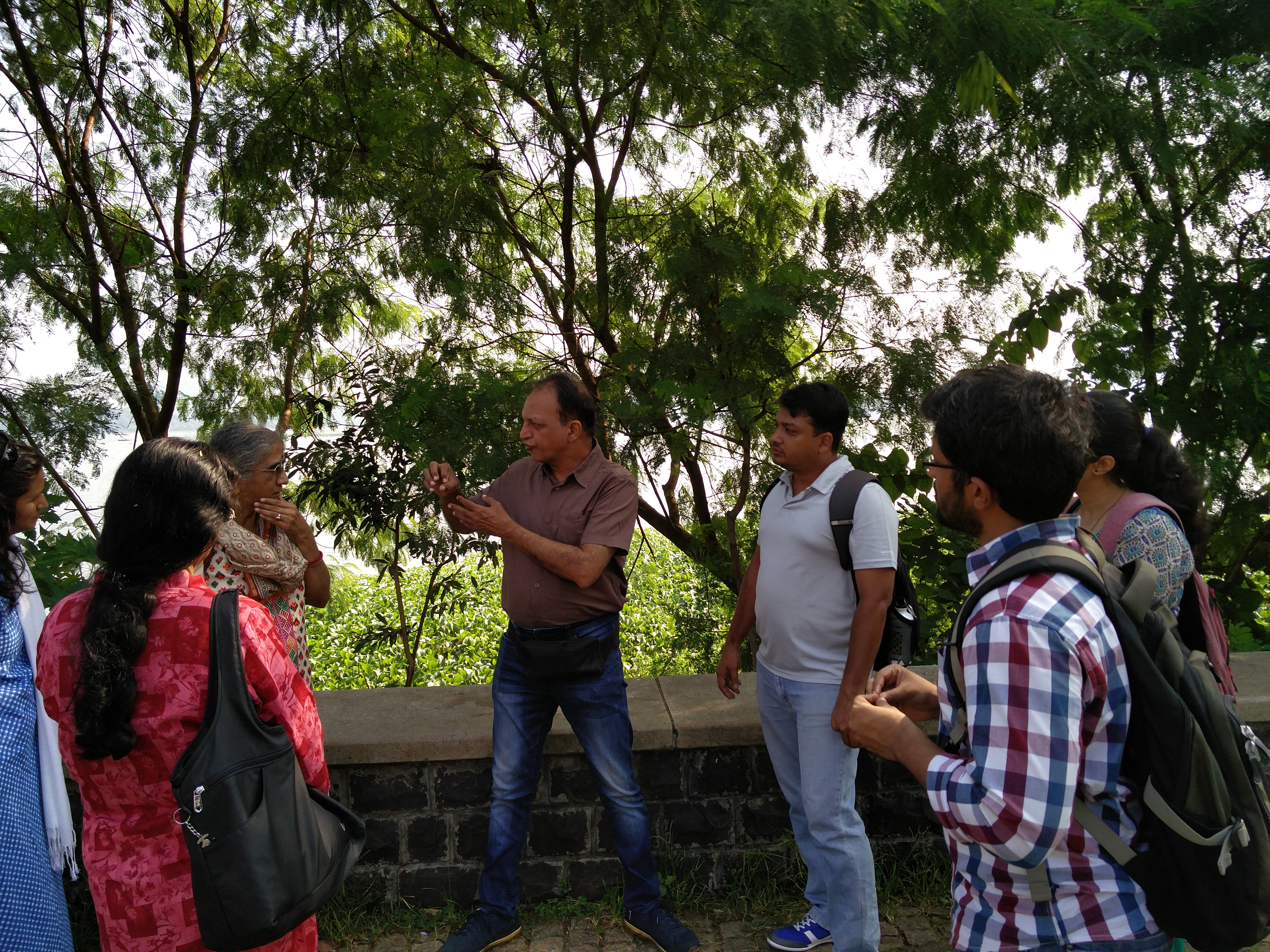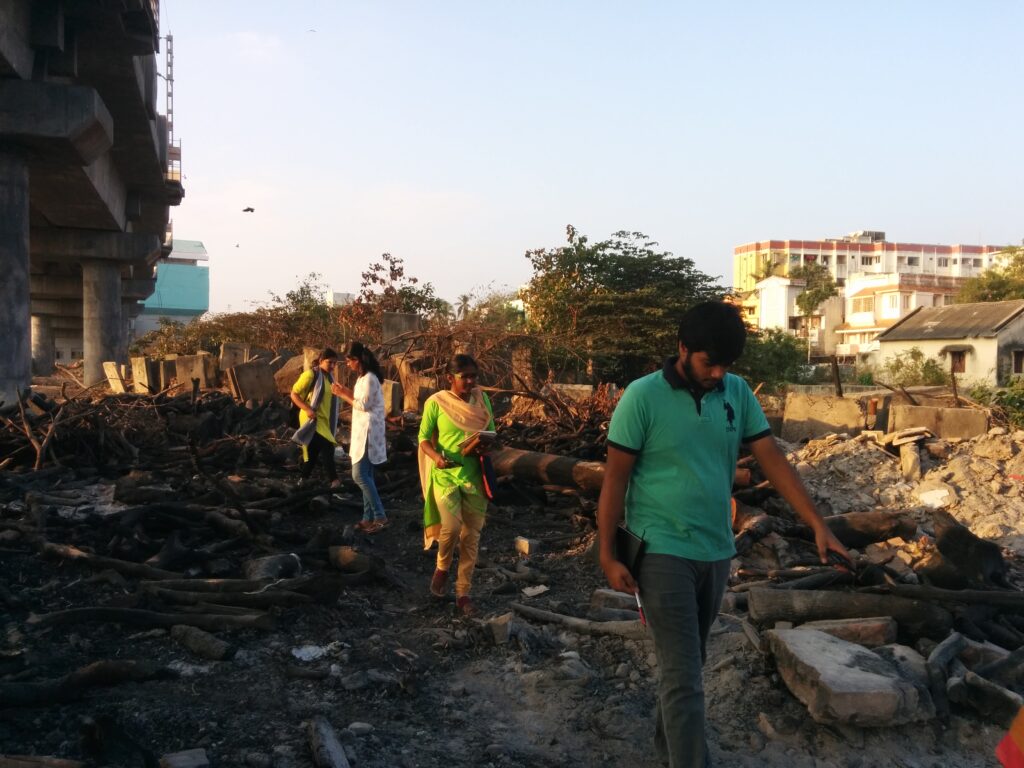Anamika Sarker
Where is this grassroots initiative implemented? Who are the promoters? Who are the beneficiaries?
Veditum India Foundation is a not-for-profit research and media organization based out of Kolkata, India. Their work is at the intersection of environment, culture, and society, and is currently centered around Indian rivers, and life in and around these rivers. Their aim is to create publicly accessible records, which range from ecological, anthropogenic, hydrological, social, and more contextual layers of these spaces and of people’s stories.
The City Water Walks project by Veditum is a pan-India, multi-city project. It has taken off in multiple cities in the country, such as in Ahmedabad, Mumbai, and Chennai. It is also presently underway in other cities such as Kolkata. Recognizing that they are not the first, neither the only organization to map urban commons, they simply wish to provide a platform for people to host their information on after some basic vetting. When people from various cities are interested in conducting these walks, Veditum can provide them with a basic framework for it, should they ask for it. The City Water Walks project is entirely volunteer driven by curious citizens who are generally enthusiastic about learning about the urban realm that they inhabit. As such, the promoters would be the same individuals and groups who conduct the walks.
In terms of the dissemination of information and a growing awareness, the direct beneficiaries of the program are the common citizens. Yet, realizing that just a couple of guided walks are not sufficient to drive impactful change, the founder of Veditum India Foundation, Siddharth Agarwal believes that the persistence of these projects is the key to success. In allowing for the information to be open-source and accessible by people all over the web, citizens become more aware of the water infrastructure in their cities as a short-term objective. And in the long-term, in the presence of persevering demands from the citizens, they become the direct recipients of any administrative and development changes made in the city. Additionally, the global audience is also a beneficiary of this project, who can then use a similar framework to conduct similar studies and projects in their own cities.
How does this initiative engage with climate? Does it tackle mitigation, adaptation, both or other dimensions of climate change?
It is indisputable that climate change is real and very much upon us. But the changes which have been observed in recent years do not stay bounded within the geopolitical boundaries of any one country or region. Any changes to the local weather and climate of any area in the form of extreme weather events is bound to have global significance.
According to Pathak et al. (2014), “the hydrological cycle is intimately linked with changes in atmospheric temperature and radiation balance. A warmer climate may lead to an intensification of the hydrological cycle, resulting in higher rates of evaporation and increase of liquid precipitation. These processes, in association with a shifting pattern of precipitation, may affect the spatial and temporal distribution of runoff, soil moisture, groundwater reserves etc. and may increase the frequency of droughts and floods.” The director-general of the India Meteorological Department confirmed to Mongabay-India, a conservation and environmental science news platform, that the seasonal reliability of the annual monsoons in India has been changing. What used to be a steady combination of rains and sun is giving way to long periods of inadequate rainfall followed by intense rain; in short — drought and floods.
Reports from various parts of the country, for instance inadequate rains in Kerala and Karnataka followed by intense storms, bouts of strong rainfall of more than 900mm in Tamil Nadu in one day, weeks of flooding in cities such as Mumbai and in parts of Himachal Pradesh, Uttar Pradesh, Bihar, and Assam, and drinking water reserves running dry in Chennai have made it clear that these unanticipated patterns are a result of climate change. Such extreme weather events are expected to become commonplace in coming years, with an impending water crisis which is nearly upon us. Vast areas and populations living in them are being starved of water as the average temperature rises, worsening the number of people suffering from water stress. In addition to variable rainfall patterns, open areas which acted as major drainage points or forests in the past are being overrun by expanding cities. So, when there are excessive rains, cities are not able to drain the water, leading to widespread inundation.
For cities to expand in manners which are environmentally directed and sustainable, it is important to study the already existing infrastructure and patterns of distribution (of water). This is where we believe the City Water Walks projects fits in to the picture. By documenting water in the urban realm, including where the water comes from, how (and where) it travels within and city, and where it ultimately goes, it makes available a near-holistic understanding of urban water. An essential part of this process is to study the development of this network, which then makes it possible to map the changes which have taken place. Such research is carried out by often undertaking these walks in person, where citizens can see for themselves the route that the water they use and dispose on a regular basis, travels to and from. In addition to this, referring to academic and research projects, government archives, oral histories, narratives, and even literature from the region can add to the different layers of information one can gather for the program. In doing so, and by making educated estimates of what the upcoming years will look like for the city, the City Water Walks project will allow elected municipal and government officials to implement more efficient policies. Additionally, the walks which are a part of the City Water Walks project are different from regular walking tours which have become common in many cities today. This project urges us to be more mindful of the environment that we are in and is done from the perspective of record keeping and record making. In that sense, we believe that the City Water Walks project seeks to engage with climate change by helping Indian cities to better adapt to changing environmental conditions and preparing them to stay resilient against future extreme weather events.
What are the main objectives? What are the main values?
According to the Veditum India Foundation, the City Water Walks project was “born out the desire to understand how the urban [water] commons function and how are they affected by constant changes in governance and development.” In an interview with us, Siddharth spoke of the objective of the project as multifold- before the walk(s) is conducted, it is about building an idea to understand the context of where we as citizens and a society are situated. During the walk, the objective changes to a building a relationship with the landscape and with the water commons, which otherwise does not exist for us since it often remains hidden from view. This is especially important because citizen engagement is what triggers a mechanism towards accountability. The eventual goal is to contribute to smarter administrative and development decision making through their work. Their intent to amplify the voices of young Indians and push for collective action wherever required. The overall objective of the project can be understood as creating and revealing multiple reference points to understand and measure the changes in our cities, and to push for more comprehensive record-keeping.

What is the timeline? Are there already visible effects?
The timeline for the project differs from city to city. But a part of the birth of the project was driven by the smaller temporal scale of it. The founder of Veditum India Foundation was already walking along the river Ganga and mapping it, which was a 6-month long commitment. Around the same time, questions about how other people could get involved in similar projects within more localized contexts came up. That is when the idea of the City Water Walks came to be- as a one-day long commitment made by citizens who were interested in questions of the relationship between their cities and the water which quenches its thirst.
Who are the actors involved? What is their background?
Veditum, as an organization, is open to have individuals or other organizations approach them with proposals to conduct similar water walks in their respective cities. As such, the City Water Walks project is not a centrally led project, with a fixed team working on it. It is, in essence, led by curious citizens who want to know more about the cities they inhabit and want to make that information available to others. While speaking with Siddharth, we were told that most people who choose to get involved in the project are those who are interested in urban studies, working within issues of environmental and policy accountability, students, general enthusiasts, and citizen scientists.

Which limits (institutional, physical, social, etc.) does it encounter?
As independent researchers, often there is a physical restriction of access to spaces, regardless of whether these are publicly or privately owned, and can lead to policing of these spaces by those who implement and enforce laws. Additionally, in the absence of an education institutional affiliation, a lot of information in the form of city-level records and other records, is often withheld. In such cases, it becomes necessary to rely on citizen records to fill in the missing gaps. It can also often be difficult to ensure the involvement of the local communities at different levels.
Are any shortcomings or critical points visible? What other problematic issues can arise from its implementation?
Currently, the main shortcoming of the project is the limited number of partners that it has. Strength and collective action are more likely to build up and be effective only when there are larger numbers and more long-term partners for the same. As for implementation, since this is primarily a research-based project, there are no foreseeable issues which may arise because of the findings from the project.
How would it be potentially replicable in other settings?
The City Water Walks is a project that is flexible, both in terms of who all are involved in it, but also where it may be implemented. Since the project was first started in the city of Mumbai along the Mithi river, it has already travelled to other parts and cities in India, where the project has transformed to contextualize itself within the respective cities.

Is this initiative conducive to broader changes (law, institutional arrangements, long term sustainability or community preparedness, etc.)? If yes, which?
The project is carried out with a lot of hope in the hearts of those conducting these walks- hope that more people from various cities will become interested. Given that people from various backgrounds are, and can be, involved with the City Water Walks project, the dissemination of information within different communities is faster. And as the network and bandwidth increases, the framework to carry out these walks and projects can become directly workable. The City Water Walks project especially looks at questions and infrastructure related to water supply and drainage. These are essential components which need to be addressed, at institutional, policy, and community levels, to make our cities more sustainable and prepared for the climate crisis.
Explain which materials you have used for your entry and eventually add links.
Arcanjo, M. (2019). The Future of Water in India. Retrieved from http://climate.org/wp-content/uploads/2019/10/The-Future-of-Water-in-India.pdf
Gopikrishna Warrier, S. (2019, September 19). As climate change disrupts the annual monsoon, India must prepare. Retrieved from https://news.mongabay.com/2019/09/as-climate-change-disrupts-the-annual-monsoon-india-must-prepare-commentary/
N.A (2021). Veditum India Foundation. Retrieved from https://veditum.org/
N.A (2021). City Water Walks. Retrieved from: https://veditum.org/citywaterwalks/
Pathak, H., Pramanik, P., Khanna, M., & Kumar, A. (2014). Climate change and water availability in Indian agriculture: impacts and adaptation. Indian J Agr Sci, 84, 671-679.
Prakas, A. & Goswami, A. (2020, August 29). Indian cities get drowned every monsoon. Here’s what can be done about it. Retrieved from https://scroll.in/article/971519/indian-cities-get-drowned-every-monsoon-heres-what-can-be-done-about-it
Sarker, A. & Agarwal, S. (2021, September 23). Where does Kolkata get its water from? Retrieved from https://www.youtube.com/watch?v=QvK6UQfaO3c